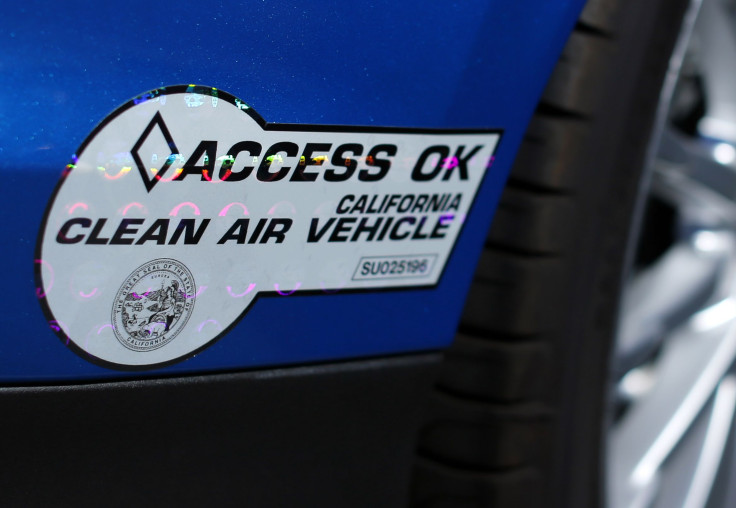Electric Vehicle Carpool Lane Privileges Do More Harm Than Good Because They Cause Congestion, Report Finds

One of the incentives some U.S. states are using to lure buyers to lower-emission vehicles is allowing them to drive without passengers in High Occupancy Vehicle (HOV) carpool lanes. For urban commuters this is an enticing offer, especially on traffic-choked highways around cities like Los Angeles and Atlanta.
But a study from a group of environmental economists found allowing any single-occupancy vehicles in carpooling lanes can have a negative impact. There comes a point, they say, when a carpool lane has no positive environmental or traffic-calming effects because it has too many cars on it, regardless of whether some of them are electric vehicles or plug-in hybrids. This is a particular problem right now on some California highways, the researchers say.
“The conclusion of the paper is that even if you include only truly zero-emission vehicles like electric cars, it would still not be desirable because of the traffic caused by more vehicles in these lanes,” Antonio Bento of Cornell’s Charles H. Dyson School of Applied Economics and Management told IBTimes by phone Tuesday.
Bento and his co-authors of the study published in the August edition of the American Economic Journal concluded allowing single occupancy drivers to use HOV lanes contributes to $4,500 in social costs per car annually, including the cost of time lost trapped in traffic to the additional fuel costs linked to idling and slow-moving congestion.
Bento said the issue affects any HOV lanes that are already inundated with traffic, such as California’s Interstate 10, and he recommended states and well-intentioned lawmakers do more to track congestion in carpool lanes and adjust policy accordingly.
“If you take the Virginia Corridor, for example, those HOV lanes are not really clogged at peak periods,” Bento said, referring to the section of I-95 near Washington. “Adding a few electric cars doesn’t hurt, but it’s eventually going to arrive to a point where adding cars to it will.”
California regularly adjusts the vehicles that qualify for HOV privileges through its Clean Air Vehicle program. In 2011 the state stopped allowing gasoline-hybrid cars from single passenger access to carpooling lanes, but it lists 19 plug-in hybrid vehicles (PHEVs) that qualify. Many PHEVs are cars that run for a while on electric before switching to gas, so a lot of them are likely to run out of battery power and run like regular gas-burning cars on long, traffic-congested commutes. The Chevrolet Volt, for example, can travel about 35 miles on battery power before it switches over to becoming just another four-door gasoline powered car on a highway.
But the study suggests something more than just adjusting who gets to drive in carpool lanes without passengers. It suggests that HOV lanes -- at least ones on the most congested highways -- need to be just that: lanes for carpoolers.
© Copyright IBTimes 2024. All rights reserved.












